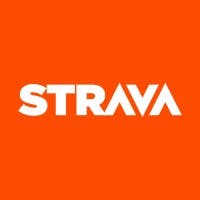Thesis
In both professional and amateur sports, technology is playing an increasingly major role. Venture capitalists invested $1.4 billion into sports tech startups in 2020, a number that grew to $5.7 billion in 2023. Among other things, startups in the sports tech space are taking a data-driven approach to help coaches guide players remotely, measure their workloads, and optimize training schedules.
The number of fitness companies in the US is growing. In 2023, there were over 115K fitness businesses, which is up 29% from 88.9K fitness companies in 2013. Meanwhile, the global sports tech market size was valued at $20.3 billion in 2023 and is estimated to grow at a CAGR of 11.2% from 2024 to 2032 to reach $52.7 billion. The market is driven by the growing use of wearable tech and performance-enhanced tools, increasing adoption of AI, ML, and AR/VR tech, and the rising number of sports events.
More broadly, a growing public interest in health and wellness is evident in the increasing popularity of gym membership and physical activities like running. For instance, as of 2019, one in five Americans, or 64.2 million people were members of gyms or health clubs, which is up 28% since 2010. Running, in particular, has seen a significant surge in popularity, with approximately 50 million Americans, or 15% of the US population, participating in some form of running or jogging as of 2022, up from 11.3% in 2010. As fitness activities become more prevalent in daily life, so does the desire to connect and build community with others who have similar exercise habits.
Strava is a platform for athletes and fitness enthusiasts. It provides a fitness tracking tool that doubles as a sports and fitness-focused social network, empowering users to record and share their workouts, connect with others, and engage in friendly competition. Athletes and fitness enthusiasts can track various activities like running, cycling, swimming, and more while analyzing detailed performance data to monitor progress and set new goals. Strava's user interface and features have made it popular among those seeking motivation, accountability, and a sense of community in their fitness journey. Strava offered 48 different sport categories for tracking fitness as of March 2024, emphasizing its attempt to appeal to a broad range of fitness enthusiasts.
Founding Story
Strava was founded in 2009 by Michael Horvath (former CEO) and Mark Gainey (Chairman).
The company’s origin can be traced back to the founders' undergraduate time at Harvard University, where they were teammates on the crew team. This is how the co-founders met, but after graduation, they pursued different paths.
Prior to meeting Horvath, Gainey grew up in Reno, Nevada, where he was actively involved in skiing and soccer, encouraged by his supportive parents. His athletic journey shifted throughout college, transitioning from soccer to running to rowing, where he met Horvath. After graduating in Fine Arts at Harvard in 1990, Gainey ventured into the venture capital sector in Palo Alto. Meanwhile, Horvath graduated with an A.B. in economics at Harvard in 1988 and then pursued a PhD in economics at Northwestern University from 1991 to 1994.
During their time apart, Gainey was working at an early-stage tech company and Horvath was an academic. They still got together in Horvath’s office at Stanford because it had a fast internet connection even in the 1990’s when dial-up still existed. Horvath and Gainey realized they missed their crew team spirit and competitive drive. This longing led them to conceptualize a digital space that could recreate a "virtual team” or an online community where athletes could connect, compete, and celebrate their achievements, irrespective of their physical locations.
This idea laid the groundwork for what would eventually become Strava. However, their vision was initially postponed due to technological and geographical limitations. In 1994, they lived on separate coasts, and GPS technology was not widely available. In the interim, they co-founded Kana Communications, a company they later took public in 1999.
Since the 1990’s, a few tailwinds emerged. Technology such as wearable devices and smartphones started to advance. Social and community preferences were also changing with the existence of Twitter and Facebook where more people were willing to share their personal lives compared to 1995. Personally, the co-founders were searching for something different from enterprise software like Kana Communications. They wanted to build a trusted and connected consumer platform.
The name "Strava" is derived from the Swedish word for "strive," reflecting the founders' vision of creating a platform centered around pursuing athletic excellence. Although initially focused on the cycling community, Strava was designed to serve athletes from various disciplines.
Gainey is a serial entrepreneur and sits on the boards of Alter-G, BoardVantage, Daum, Clari, and Coaching Corps. As of August 2024, Gainey serves as the chairman of Strava, while Horvath is the former CEO. In 2013, Horvath announced that he was stepping down as CEO for the first time for family reasons and would instead come in as president and chairman while Gainey replaced him. Horvath resumed his role as CEO in November 2019 but announced in February 2023 that he'd be stepping down from the CEO role for the second time. In January 2024, Horvath was succeeded by Michael Martin. Martin joined the company with senior leadership experience from previous roles at YouTube, Nike, and Disney, where he served in various VP-level roles.
In April 2024, the company announced that it was hiring two new executives: Matt Salazar as a new chief product officer, and Rob Terrell as a new chief technology officer. Salazar previously worked at Epic Games as the vice president of product management and growth. Before that, he worked at Nike for nearly five years, where he led product management and growth for the Nike app, Nike Run Club, and Nike Training Club apps. Terrell was the chief technology officer at Zynga, where he led development teams in creating mobile titles and contributed to company strategy. Before Zynga, Terrell founded multiple technology companies.
Product
Strava is a platform intended to help athletes and fitness enthusiasts track their workouts, find new jogging routes and exercise regiments, connect and compete with other athletes, and publish their training with titles, captions, and photos.
Activity Tracking
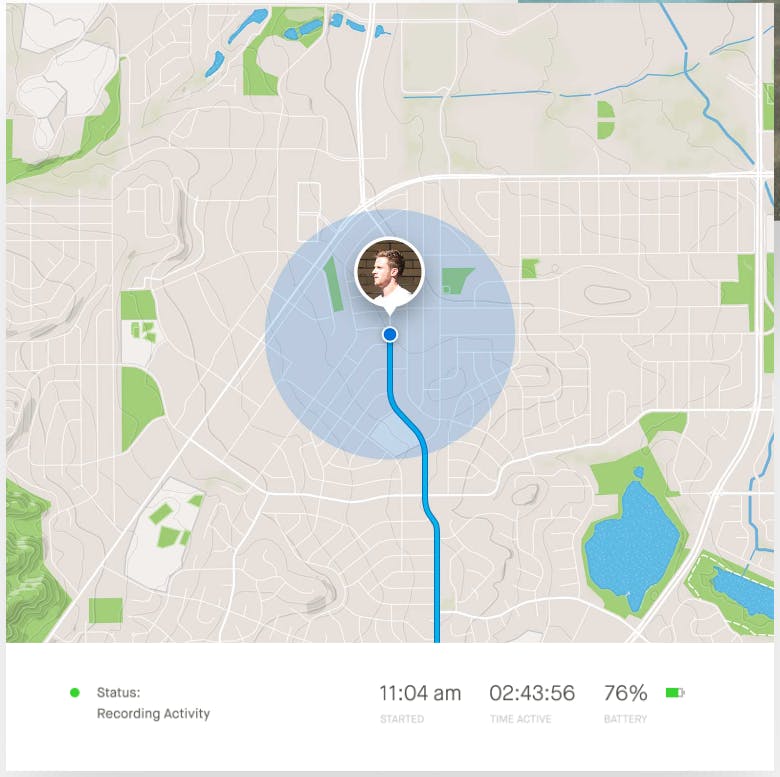
Source: Strava
Strava's core feature is activity tracking for running, cycling, swimming, and other sports. Users can record activities using GPS devices like Garmin or Apple Watch or manually enter workouts. The app displays maps and statistics like duration, pace, calories, and elevation for every activity. Strava analyzes the data to provide detailed performance metrics, personal records, and segment leaderboards, which show who beat each user in the same segment.
Route Planning

Source: Strava
Strava provides a database of road and trail routes crowdsourced from eight billion logged activities. Athletes can discover popular routes, plan new ones, and access recent photos showing current trail conditions.
Heatmaps, personal and global, provide visual representations of an athlete's cumulative experience and showcase publicly available athlete activity within the last year. Meanwhile, Strava Beacon allows users to share their real-time location with family and friends when recording activities using the Strava mobile app. Subscribers also receive driving navigation prompts from their current location to the route starting point and can find popular start points among athletes for various sports types using aggregated and anonymized community data.

Source: Strava
Strava's acquisition of proprietary 3D mapping technology company FATMAP in January 2023 further enhanced the route planning part of the user experience. In November 2023, Strava added an "Activity Flyover" feature powered by AI that generates a 3D aerial overview video of any activity, aiming to make it easy to visualize routes.
In August 2023, the company also added a new feature for subscribers to see photos and their exact locations while planning routes on the desktop version.

Source: DC Rainmaker
This is an upgrade from the earlier 2023 route-photo feature that displayed photos along a created route but did not show their location or allow users to plan based on them.
Social Features
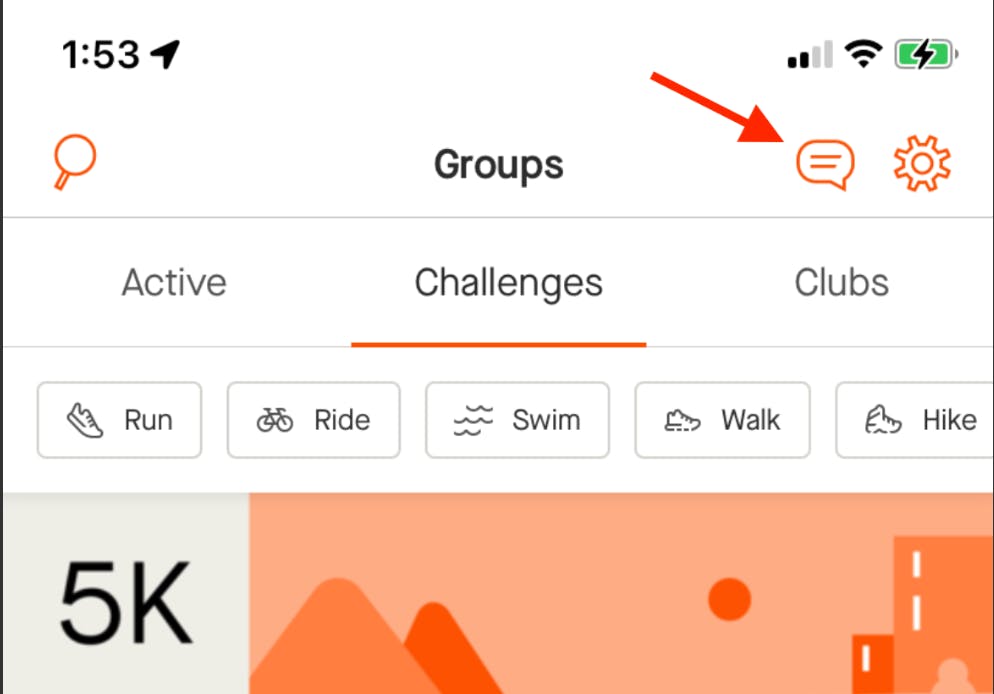
Source: Strava
Strava has a social component where athletes can follow friends, join clubs, share photos and stories, and give "Kudos" to others' activities which appear in a social media-style feed. A "Groups" feature allows athletes to start group challenges, join clubs, and meet other users. Strava aims to provide a competitive motivational network with workout analytics, fitness data, achievements, and leaderboards.
A new messaging feature launched in December 2023 allows users to chat one-on-one or in groups and easily share activities and routes. Privacy controls require users to opt-in and choose whether anyone or only existing followers can message them. The goal of the messaging feature is to reduce context switching between other apps when planning group fitness activities. As Strava's chief business officer, Zipporah Allen, noted in the December 2023 press release:
“The magic of Strava is in that connection and belonging that people feel, and so messaging is really the next iteration of what that feels like.”
Strava also launched an AI-powered moderation system in May 2024 to detect unwanted behavior in activity comments and messages.
In August 2024, the competitive nature of Strava has also led to the emergence of Strava Mules or "Surrogates" who are paid to complete activities on behalf of others to help them obtain recognition without actually doing the activity themselves. These "Mules" are sent out with a paying customer's Strava account logged into their phone and paid to run in their place. While this is an unintended use (potentially an abuse) of Strava's social reward features, it is an indication of the value that users attach to recognition on Strava.
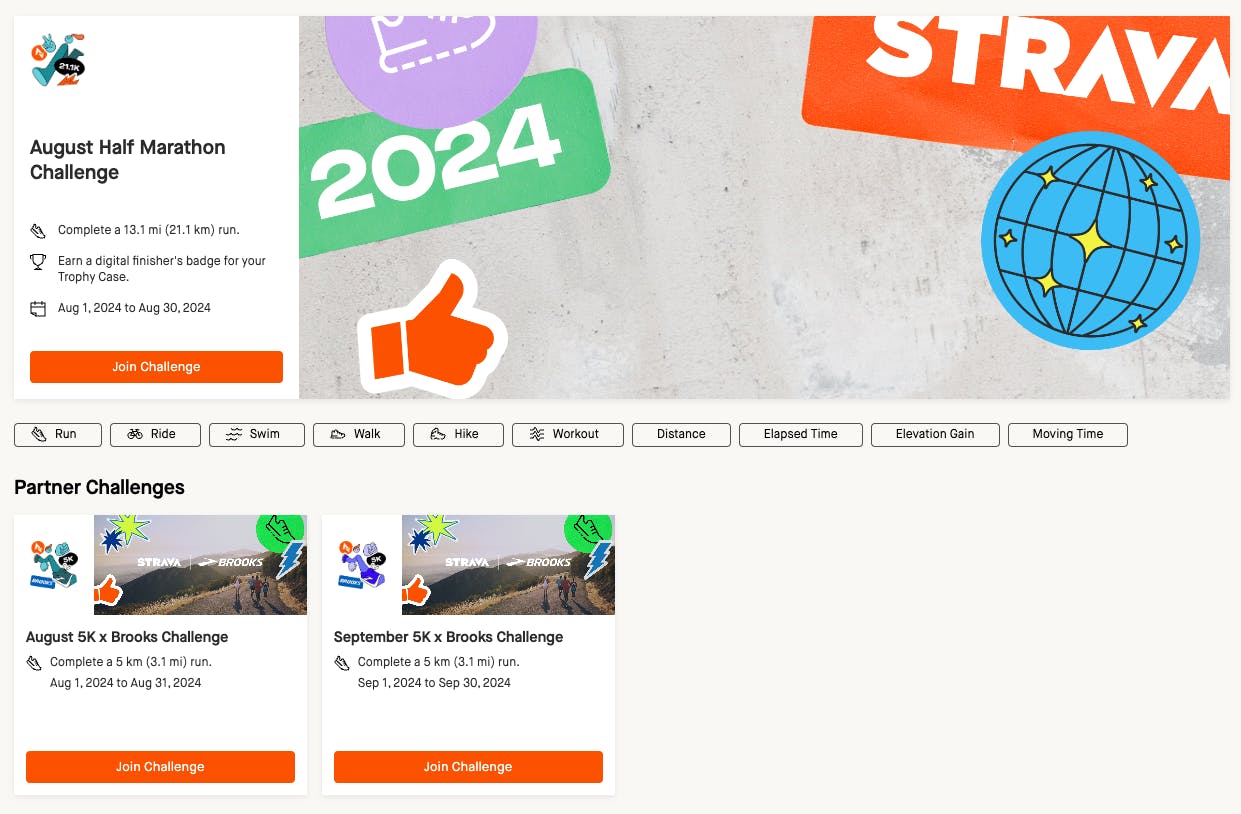
Source: Strava
To keep users engaged, Strava regularly launches virtual challenges where athletes earn digital badges or real-world prizes from brands for completing certain goals. Some organizations (e.g., Adidas, Nuun, Salomon) sponsor challenges with rewards, while others are simply personal goals to keep athletes motivated. Personal goal-setting is prominent with features to set weekly or annual targets. In May 2024, Strava began using AI to validate challenge results and segment records to deter cheating on leaderboards.
Integrations & AI Capabilities
Strava added a Spotify integration in April 2023 to allow users to more easily share music from their activities and reduce app switching. The company also introduced several AI-powered features in May 2024, including the Athlete Intelligence Beta, which uses large language models to interpret training data and provide summaries. Other additions included a dark mode option, night heat maps, and enhanced leaderboard anti-cheating measures.
Market
Customer
The ideal customer profile for Strava is an active, tech-savvy individual who is passionate about sports and fitness. Strava users are typically avid runners, cyclists, and outdoor enthusiasts who enjoy tracking their activities, setting goals, and connecting with like-minded individuals. Strava's target audience tends to be motivated by challenges, competitions, and community engagement. Strava’s customers can range from amateur fitness enthusiasts to professional athletes such as Eliud Kipchoge, the world record holder in the marathon, and INEOS Grenadiers, a professional cycling team.
The platform provides a social networking aspect where users can connect with friends, join clubs, and participate in challenges, which appeals to those seeking camaraderie and motivation in their fitness journey. Strava also targets fitness enthusiasts interested in improving their performance and achieving personal goals by leveraging the app's data-driven insights and training features.
While running and cycling are the most popular activities among Strava users, they also engage in a wide range of other sports, such as swimming, hiking, and skiing. Strava's customer base is large and varied with over 100 million registered users globally as of 2023. Strava has a high percentage of millennials using the app. Out of all cyclists using Strava, 47% are millennials, 29% are Gen X, 17% are Gen Z and 7% are Boomers as of 2023.
In addition to individual athletes, Strava serves businesses and organizations looking to engage with the fitness community. The Strava Metro platform provides anonymized data insights to help cities and urban planners make informed decisions about infrastructure and transportation. Companies like Salomon, REI, and Sweaty Betty have leveraged Strava's advertising and partnership opportunities to reach their target audiences, increase sales, or build communities.
Market Size
As of June 2024, Strava operates in the $8.5 billion global fitness app market, which is expected to grow to $28.7 billion by 2029 at a 27.5% CAGR. The market is driven by an increasing number of health-conscious people, the adoption of technology such as smartphones and the internet, and the growing usage of fitness apps where people, especially those suffering from chronic diseases, can track health metrics.
In 2023, an estimated 23% of American men and 20% of American women regularly exercise. In 2021, Michael Horvath, Strava’s former CEO, said the company believed 700 million people worldwide “wake up every day wanting to be active” and could benefit from using Strava.
Competition
Wearables
Garmin Connect: Garmin Connect is a digital fitness platform that offers personalized coaching, training plans, and analytics tools for athletes. Founded in 1989, Garmin provides fitness tracking solutions, primarily specializing in GPS technology and wearable technology for a variety of activities, indoor and outdoor. The company has a valuation of $34.7 billion as of August 2024. Garmin Connect does not share public information on the number of users or activities tracked, but Garmin was estimated to account for 9% of the smartwatch market in the United States as of December 2023.
Compared to Strava, Garmin Connect offers more advanced training and coaching features, providing personalized plans, recovery advice, and insights based on users' fitness levels and goals. Meanwhile, Strava provides better social features, making it easy for users to connect with friends, join clubs, and participate in challenges. Both apps provide data analysis, but Garmin Connect offers more in-depth insights when used with compatible devices. Strava has more integrations with third-party services, while Garmin Connect is more limited in this aspect. While Garmin Connect appeals to users who prioritize coaching and in-depth data analysis, Strava caters to users who value community and connectivity.
Fitbit: Fitbit, founded in 2007, is in the wearable fitness device market. The company offers a range of fitness trackers and smartwatches that monitor users' activity, sleep, and heart rate. Fitbit was acquired by Google in January 2021 for $2.1 billion. Fitbit's primary focus is on activity and health tracking for users who use the company’s wearable devices, while Strava emphasizes GPS tracking and performance analysis for outdoor activities. In August 2024, Fitbit partnered with Strava to sync Fitbit activities, making it a Strava partner as well as a competitor.
Apple Fitness: Launched in 2015, Apple Fitness is the built-in and default fitness tracking app for Apple Watch and iPhone users. It provides an overview of users' daily activity, including step count, calories burned, and exercise minutes. In 2020, Apple expanded its offerings with the launch of Apple Fitness+, a subscription-based fitness service that provides guided video workouts across various disciplines, including running, cycling, and strength training.
Apple Fitness leverages the ecosystem of Apple devices and services, making it a convenient choice for users already invested in the Apple ecosystem. Apple Fitness offers personalized recommendations based on user data and emphasizes studio-style workouts led by professional trainers. In contrast, Strava emphasizes its user-generated content, such as sharing activities, photos, and achievements on social media, and caters primarily to outdoor activities like running and cycling.
Fitness and Health Apps
Runkeeper: In 2016, Asics acquired Runkeeper, a fitness tracking app, for $85 million to integrate software into its offerings and leverage Runkeeper's 34 million users for cross-promotion of its products. Despite the acquisition, Runkeeper, which was founded in 2008, has maintained its autonomy and continues to operate independently. Runkeeper lacks the social aspects that make Strava a "Facebook for runners". While Runkeeper has some social features, such as the ability to share runs and join challenges, it does not have the same level of social interaction as Strava, which allows users to give kudos, comment on each other's activities, and compete on segment leaderboards.
Nike Run Club: Founded in 2012 by its parent company Nike, Nike Run Club (NRC) is a digital fitness app that offers features to augment the traditional running experience and a virtual community to share runs. Nike has a valuation of $127.9 billion as of August 2024. One of the unique features that NRC offers is its guided runs feature, where users are led through a run distance by a coach on an audio track who offers tips and encouragement during the run. Additionally, the app also offers free training plans that can help users reach their running goals, ranging from a 5K to a marathon. While Strava also offers training plans for running, they are limited to users with a pro subscription.
MyFitnessPal: Founded in 2005, MyFitnessPal is a mobile app and website that helps users track their diet and exercise. The company was acquired by Under Armour in 2015 for $475 million and then sold for $345 million in 2020 to investment firm Francisco Partners. MyFitnessPal focuses on calorie counting and nutrition tracking, which differentiates it from Strava's primary emphasis on activity tracking and community building. However, both apps aim to help users achieve their fitness goals and maintain a healthy lifestyle.
MapMyFitness: MapMyFitness, founded in 2007, provides a suite of fitness-tracking apps, including MapMyRun, MapMyRide, MapMyWalk, and MapMyHike. The company was acquired by Under Armour in 2013 for $150 million. MapMyFitness apps offer features similar to Strava, such as GPS tracking, route mapping, and community. However, Strava has more features, including segments and leaderboards, which foster competition within the community.
Business Model
Tiered Subscriptions

Source: Strava
Strava’s “freemium” model allows users to use the app for free with limited capabilities or purchase a “premium” subscription with enhanced features. As the company grew, it dialed back some free components and turned them into premium capabilities (i.e., segment searching, leaderboard viewing, and ride matching). However, Strava users can access several core features for free including activity recording, social network access, safety tools and lifetime personal record tracking.
For $79.99/year or $6.67/month with the individual plan, users can access additional features such as group challenges with friends, competition on segment leaderboards, route building and sharing, advanced activity analysis, custom goal setting, and "best efforts over time".
In July 2024, Strava announced its newest pricing offering: the family plan. Starting at $139.99/year, four users i.e. friends or family can jointly purchase a plan to access premium features at a discounted rate.
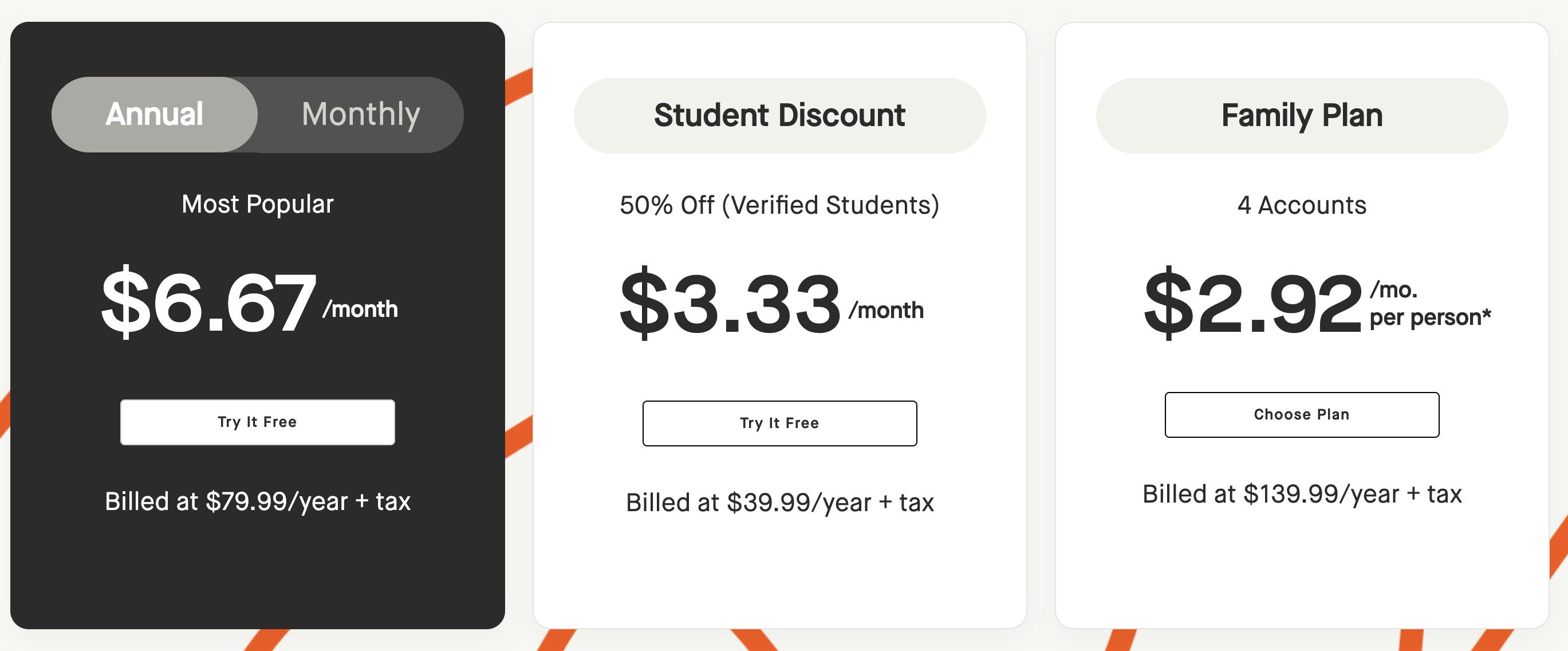
Source: Strava
Strava also provides a student plan that starts at $3.33/month or $39.99/year, which is a 50% discount from the individual plan and shares the same features.
Strava Metro
While most of Strava’s revenue comes from subscription users, Strava Metro, and sponsored challenges have also become revenue drivers. Strava Metro allows governments and agencies to buy Strava data to understand cycling and running patterns. The data can help them create better urban spaces for bikers and pedestrians.
Recent case studies have shown that Strava Metro data can guide the placement of bike-share stations and counters, as well as inform active transportation planning. By leveraging the insights gained from Strava users' activity data, cities can make data-driven decisions to improve cycling infrastructure and encourage active transportation. As of August 2024, Strava Metro has partnered with over 2K organizations worldwide, demonstrating its potential to transform urban mobility and create more sustainable, bike-friendly cities.
Strava Challenges
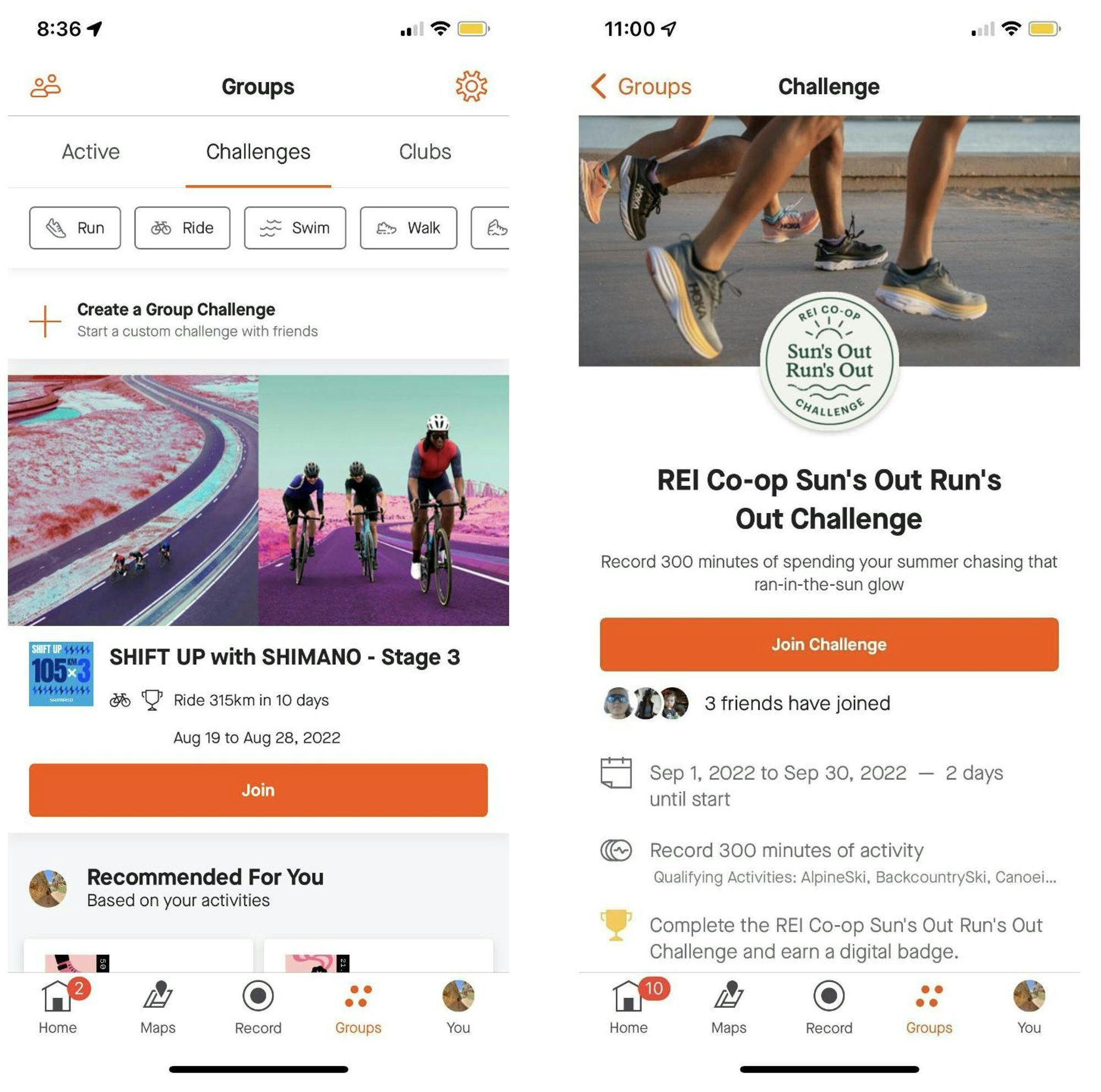
Source: Strava
Strava Challenges are like advertisements. They allow companies to promote their brand but don’t appear as conventional ads. Companies pay $30K-$200K to sponsor challenges. These sponsored challenges serve as a “motivational influence” with organic interaction rather than the “disruption” of traditional advertisements. For example, Adidas offered a Strava badge and commitment to a plastic waste cleanup project based on completing its Adidas x Parley Run For The Oceans challenge.
When a user’s friend opts to join a challenge it appears in the feed of their followers, alongside everyone’s activities. Branded challenges introduce companies to Strava users and allow them to market their brands and products. Many challenges give users prices, helping bring more customers to Strava Challenge Sponsors. Prizes can include discounts or free offerings with certain purchases.
Traction
Strava has experienced significant growth and traction. The company reported 120 million registered users globally as of 2023, a 118% increase from 55 million at the end of 2020. Strava’s revenue grew 25% year-over-year, reaching $275 million in 2023.
User engagement on the platform has also increased, with 40 million activities uploaded per week in 2023, an 86% increase from 21.5 million per week in 2020. According to Strava's 2023 report, 77% of Gen Z athletes reported feeling more motivated to exercise after seeing their friends' or family's activities on the platform.
Valuation
Strava raised a $110 million Series F from TCV and Sequoia Capital at a $1.5 billion valuation, in November 2020, bringing the company's total funding to $151.9 million. Other notable Strava investors include Sigma Partners, Dragoneer Investment, Jackson Square, Madrone Capital, and Go4It Capital.
Former CEO Michael Horvath has expressed mixed sentiments on the possibility of Strava exiting via IPO. In April 2022, he stated that he was eager to take the company public, viewing an IPO as a means to “ensure longevity” and enable specific actions that are not possible as a private company. However, in February 2023, he backtracked on that statement, noting that Strava had "no immediate plans to go public".
Despite Horvath's statement, recent developments suggest that Strava may be preparing for a public offering shortly. In July 2024, the company appointed Daniel Li as general counsel. Li has experience with two previous IPOs, one of them being Allbirds, where he oversaw the IPO as general counsel.
Key Opportunities
Partnerships and Integrations
Strava has established strategic partnerships with various brands, races, competitions, and high-profile athletes to enhance user experience and engagement. The company's partnerships with relevant brands such as Red Bull, Adidas, and Le Col Giro provide unique challenges and rewards for Strava users. Additionally, Strava's collaborations with major races and competitions, including the Virgin Money London Marathon, TCS New York City Marathon, and NYRR Virtual Race, allow athletes to participate in virtual events and connect with the global running community. Some of these athletes are professionals like pro runner Hillary Allen or pro cyclist Cory Williams who are encouraged to use Strava to grow their following and inspire other athletes.
Strava's partnership with Tour de France and Tour de France Femmes provides athletes with the opportunity to share more information during the races and offers fans greater visibility into the events. This collaboration brings the races to life for cycling enthusiasts worldwide by creating a storytelling hub for cyclists. The Tour de France Femmes is set to become the world's largest and most competitive women's race. Strava's public support of women in sports and other female-athlete-focused companies could foster a community of women eager to compete, especially in the male-dominated fitness world.
In March 2024, Strava announced new platform integrations with ŌURA and Open, allowing athletes to bring their passive health scores, such as recovery and sleep, and progressive health practices, like meditation and mindfulness, together for a holistic approach to training and well-being. This integration enables users to understand how their daily activities contribute to their overall health and performance. For example, a long run can be improved by an Open breathwork and meditation or a hike can be fueled by a strong Readiness Score from Oura.
In February 2024, Strava partnered with Fi, the connected dog collar and health platform, to celebrate Walk Your Dog Day. This partnership allows athletes to seamlessly integrate their active lives with their dogs and share their experiences with their communities on Strava.
Furthermore, as of September 2023, Strava's partnership with Nike has enabled Nike Members from Nike Run Club and Nike Training Club to sync their workouts with Strava and share them with their Strava communities. This integration expands the reach of both platforms and encourages users to engage with a larger fitness community.
Network Effects and Gamification
Strava’s use of gamification elements, such as leaderboards, challenges, personal records, and badges, fosters a sense of community and competition among users. The company’s focus on community engagement as a driver tends to separate it from traditional fitness tracking apps. The unique gamification elements encourage users to engage with others on the app to expand its user base. Passionate community users have created a marketplace of shirts and mugs to canonize the phrase “if it’s not on Strava, it never happened”. As the former CEO of Strava (from 2017 to 2019), James Quarles explained: “Community is our core. People say they don’t download Strava, they join Strava”.
Device Compatibility
With many compatible devices, Strava’s synergy with equipment makers will likely continue to be a valuable avenue. For example, over 50 million Peloton activities were uploaded to the app as of 2021, and Strava saw similar popularity among Zwift users. As a result, Strava has the potential to become the de facto social and competitive network for fitness. The company could seek to improve integration from more apps (i.e., Equinox+, Lululemon Mirror), equipment, and wearables, and offer more social network components (i.e., direct messaging). Individuals use several apps and platforms, and Strava may want to consolidate users from other applications to continue leading the market.
Key Risks
Data and Privacy Concerns
After landing in hot water for inadvertently exposing the location of US military bases in 2018, Strava eliminated mid-workout and live tracking features. The company subsequently placed a bigger emphasis on privacy, like hiding an activity’s start and end points, making private profiles, hiding profile pictures from non-friends, and hiding entire activities. The GPS component works well for fostering community, but some athletes experienced privacy breaches by individuals who found their locations from the app. If Strava continues to have data and privacy concerns it could severely limit its long-term potential.
Monetization
Users have expressed concerns that the company may begin selling their data to find new revenue, though the company has committed not to sell user data except in the case of Strava Metro as of August 2024. Since there are over 100 million active Strava users who opt for the free version as of August 2024, it’s unclear how many of the athletes would be willing to pay for the premium offering.
Strava’s subscription-based model provides a steady stream of predictable revenue. However, this model has also led to criticism from users who feel the company is nickel-and-diming them by revoking previously free features and turning them into premium perks. For example, features such as route planning, leaderboards, and performance analysis are only available to premium subscribers as of June 2023. In 2022, Strava’s “Year in Sport” feature, which provides a summary of a user’s activity for the year, was added as a premium feature, a move that led to some user frustration. Athletes currently enjoy the ad-free nature of the platform, but Strava may add an ad-supported tier as it starts to focus more on monetizing a large cohort of free-tier users.
Summary
Between its broad addressable market and minimal direct competition, Strava is well-positioned among community-oriented fitness apps. Though many other companies overlap with Strava’s business, none directly compete with Strava’s entire offering. Strava unifies all athletes on a single app, syncs with hundreds of devices, offers over 40 sports, and promotes competition and community engagement between users of all skill levels.
